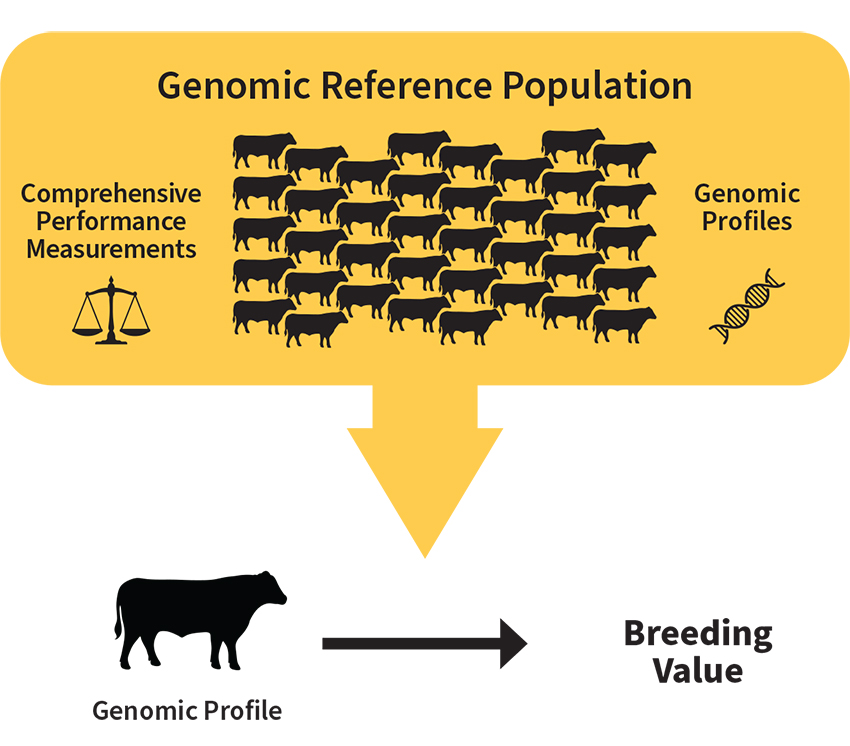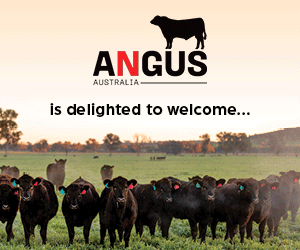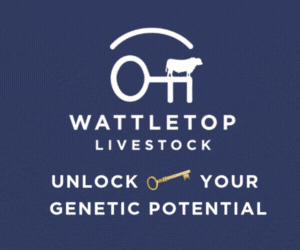Using genomics in genetic evaluation
Genomic selection, and the ability to utilise an animal’s genomic profile to predict its breeding value, is dependent on the existence of a well recorded, relevant genomic reference population.
A genomic reference population refers to a large group of animals that have both genotypes (i.e. genomic profiles) and phenotypes (i.e. performance measurements) available.

The accuracy provided by genomics to the prediction of an animal’s breeding value is determined by the size and composition of the genomic reference population that is available.
Specifically, the accuracy provided by genomics is influenced by:
- The size of the genomic reference population. i.e. how many genotyped animals have phenotypes for a particular trait.
- The heritability of the trait. i.e. a larger number of genotyped animals with phenotypes is required for traits that have a lower heritability.
- The effective population size. i.e. the more genetically diverse a population is, the larger the genomic reference population that is required.
- The genetic relationship between the animal for which the breeding value is being calculated and the animals in the genomic reference population. i.e. the more closely related an animal is to the animals in the genomic reference population, the more value genomics provides. Conversely, if an animal is not related to animals in the genomic reference population, genomics provides minimal value, and can potentially lead to the calculation of biased breeding values.
- The relevance of the production system in which the phenotypes were collected.
This method allows the analysis of animals that have genes in common that may otherwise not be closely related in traditional pedigree, giving great levels of comparison across the breed.
The accuracy of genomic selection increases for traits with varying heritability as the size of the genomic reference population (Figure 2).







